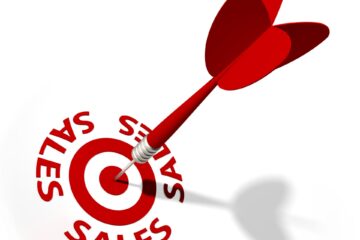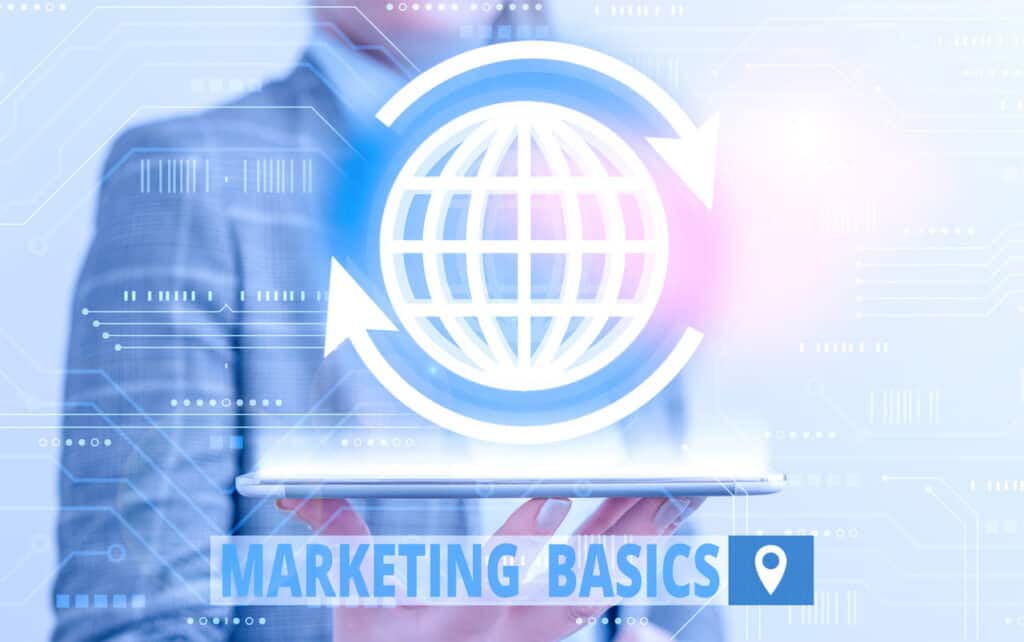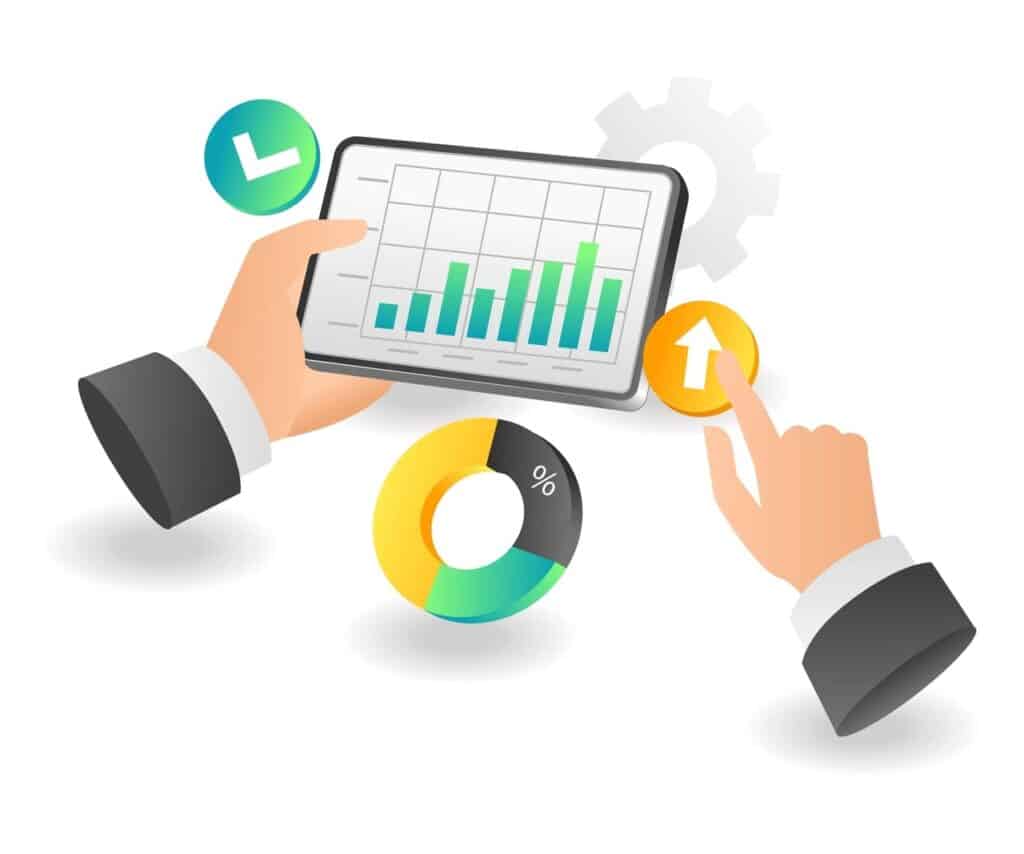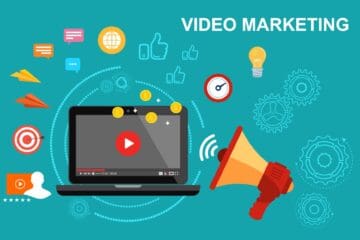In the dynamic realm of field sales, achieving targets can be a constant challenge. From lead management and deal closures to team motivation, there’s always a lot on your plate.
But what if there was a tool that could turn these challenges into opportunities? Imagine a solution that simplifies your sales operations and elevates your performance.
Welcome to Beest.app, a powerful sales enablement platform designed to help you conquer your sales targets. Whether you’re in a field sales team, a team leader, or a manager, Beest is your secret weapon in achieving and surpassing your goals.
Understanding Field Sales Targets with Beest.app
Field sales targets are crucial for sales-focused organizations. They provide direction, measure success, and fuel ambition. However, setting targets is just the beginning. The real challenge lies in achieving them. That’s where Beest comes in.
With its suite of features designed to optimize your process, Beest empowers you to meet your targets head-on. From lead management to real-time analytics, Beest provides the tools you need to turn your goals from daunting tasks into achievable goals.
But how exactly does Beest do this?
Beest goes beyond being a sales enablement platform – it’s a game-changer for field sales. And that’s not all. This field software is also a valuable tool for non-profit fundraising, facilitating efficient donor outreach and campaign management. With Beest, meeting your sales targets is not just possible – it’s a breeze.
Its main features are created to simplify your process and enhance your performance. Here’s how.
1. Route Optimization
Planning your routes efficiently is crucial for time management. Beest’s route optimization feature ensures you spend less time on the road and more time closing deals.
It does this by analyzing your leads’ locations and creating the most efficient route for you to follow. This means less time driving and more time meeting with potential customers.
2. Lead Management
Managing and tracking your leads effectively is key to ensuring no potential customer slips through the cracks.
With Beest’s lead management feature, you can efficiently organize and stay focused on your leads. Categorize them, track their progress in the sales funnel, and set reminders for follow-ups with ease.
3. Real-Time Analytics
In the fast-paced field sales world, it’s crucial to stay informed about your progress. With Beest’s real-time analytics feature, you can track your sales team’s performance in real-time.
This helps you make data-driven decisions that bring you closer to your targets. You’ll have instant access to data on important metrics like converted leads, revenue generated, and progress toward your goals.
4. Live Maps
Beest’s Live Maps feature provides an overview of your territory, allowing you to plan and evaluate on the fly. This visual representation of your sales area helps you strategize your visits, ensuring you reach the customers most likely to buy your products or support your cause.
5. Sales Management
With Beest’s Sales Management feature, staying on top of your operations is effortless.
The user-friendly dashboards offer real-time insights into your activities, enabling you to effortlessly monitor your performance and make well-informed decisions.
6. Campaign Management
Running multiple campaigns simultaneously? No problem. With Beest’s Campaign Management feature, you can effortlessly handle multiple campaigns simultaneously, each with its unique content and setup.
This feature ensures that you stay organized and give each campaign the attention it deserves.
7. Gamification
Beest takes motivation to a new level with its Gamification feature. This feature allows your sales reps to compete with each other, fostering self-motivation and improved results.
With Beest, meeting goals and targets becomes a fun and exciting challenge.
8. Payments
With Beest, you can get paid on the spot, reducing the time to cash and lessening back-office administration.
This feature makes payments easier for you and your customers. Whether it’s a one-time payment or a subscription, Beest has got you covered.
Meeting Your Field Sales Targets: Benefits of Using Field Sales Software Like Beest.app
In the world of field sales, targets represent more than just numbers. They serve as milestones to measure success, benchmarks to guide efforts, and goals to fuel ambition.
Meeting these targets can be tough. Luckily, with the right tools, it becomes achievable. Enter sales software like Beest – a game-changing solution designed to streamline your process and propel you toward your targets.
Let’s explore the benefits of using field software like Beest and discover how it can revolutionize your sales journey.
1. Increased Productivity
Productivity is the lifeblood of field sales. The more efficiently you work, the more deals you can close. Field software like Beest is tailored to enhance your productivity, enabling you to maximize your time and effort.
Increased productivity in field sales translates to accomplishing more in less time. It involves optimizing your process, minimizing time-consuming tasks, and focusing on what truly matters – closing deals.
With Beest, increased productivity is not merely a goal—it’s a reality.
- Effective time management, reducing administrative tasks, and increasing selling time.
- Streamlined process, minimizing inefficiencies and boosting performance.
- Automation of repetitive tasks, freeing up time for crucial activities.
- Real-time data for informed decision-making.
- Prioritization of leads, ensuring a focus on the most promising prospects.
- Reduced training time through Beest’s video teaching module.
- Trackable progress towards targets, fostering motivation and focus.
- Effective lead management, ensuring no potential customer slips through the cracks.
2. Enhanced Sales Performance
In field sales, performance is paramount. The better your performance, the higher the likelihood of achieving sales targets. Sales software like Beest is designed to elevate your performance by providing the necessary tools to excel.
Enhanced sales performance entails selling more in less time. It involves refining techniques, improving strategies, and boosting outcomes.
With Beest, enhanced sales performance is not merely an aspiration – it’s the standard.
- Tracking activities to gain insights into performance.
- Identifying areas for improvement to refine techniques.
- Real-time sales updates, allowing for agile strategy adjustments.
- Setting and monitoring goals to foster motivation and focus.
- Performance dashboard for comprehending and analyzing sales data.
- Comparison of performance with peers, fostering healthy competition.
- Actionable insights for data-driven decision-making.
- Effective sales pipeline management, prioritizing the most promising leads.
3. Improved Team Collaboration
In field sales, success relies on teamwork. Collaboration is the key to meeting targets, and sales software like Beest facilitates this collaboration.
Improved team collaboration entails working together towards a shared goal. It involves coordinating efforts, sharing insights, and supporting one another in the pursuit of targets.
With Beest, improved team collaboration is not just an aspiration – it’s a way of life.
- Coordinating efforts to ensure alignment towards a common goal.
- Providing a platform for seamless communication and shared understanding.
- Fostering camaraderie to boost morale and motivation.
- Sharing insights and experiences to facilitate learning and growth.
- Encouraging healthy competition through Beest’s gamification system.
- Tracking sales team progress towards targets, ensuring motivation and focus.
- Offering a platform for feedback and recognition, enhancing morale and motivation.
- Facilitating effective team management to ensure optimal performance.
4. Streamlined Sales Process
A streamlined sales process forms the foundation of successful field sales. It involves minimizing inefficiencies, optimizing operations, and focusing on the core aspect – closing deals.
Sales software like Beest is designed to streamline your process, enabling you to work smarter, not harder.
A streamlined sales process denotes a smooth, efficient, and effective operation. It entails eliminating unnecessary steps, reducing time-consuming tasks, and concentrating on the most critical aspects of selling.
With Beest, a streamlined sales process is not merely a goal – it’s the norm.
- Reduction of time-consuming tasks to enable a focus on selling.
- Automation of repetitive tasks, freeing up time for essential activities.
- Provision of effective tools for lead management.
- Tracking of activities for operational insights.
- Real-time data for informed decision-making.
- Prioritization of leads to concentrate on the most promising prospects.
- Reduced training time through Beest’s video teaching module.
- Trackable progress towards targets, fostering motivation and focus.
5. Data-Driven Decision-Making
In the realm of field sales, data reigns supreme. It provides insights into performance, customers, and the market. Sales software like Beest is designed to provide the data necessary for making informed decisions.
Data-driven decision-making entails utilizing data to guide decision-making processes. It involves analyzing sales data, understanding performance, and making decisions based on these insights.
With Beest, data-driven decision-making is not just an aspiration – it’s a reality.
- Insights into sales performance, facilitating an understanding of strengths and areas for improvement.
- Improved understanding of customers, enabling tailored strategies.
- Insights into the market, identifying trends and opportunities.
- Trackable progress towards sales targets, fostering motivation and focus.
- Real-time data for agile decision-making.
- Identification of areas for improvement to refine techniques.
- Performance dashboard for comprehending and analyzing sales data.
- Comparison of performance with peers, fostering healthy competition.

10 Tips for Enhancing Your Field Sales Strategies Using Field Sales Software
In field sales, strategy is crucial. It guides your efforts, shapes your actions, and drives your sales team’s success. Beest, a sales software, empowers you to enhance your strategies and excel in your sales journey.
Here are some proven to be effective tips for enhancing your field strategies through the use of reliable and credible field sales software like Beest.
1. Leverage Real-Time Analytics
Real-time analytics provides instant access to your sales data. It helps you track your activities, monitor your performance, and make data-driven decisions on the fly.
With Beest field sales software, real-time analytics is not just a possibility – it’s a reality. It offers valuable insights into your sales performance, revealing your strengths and areas for improvement. Stay ahead of the game by adjusting your strategies in real time.
Tips to Properly Execute Real-Time Analytics
- Track Your Sales: Keep a record of your activities, such as converted leads, revenue generated, and progress toward your sales targets.
- Analyze Your Performance: Utilize the data to assess your performance. Identify areas for improvement and refine your techniques accordingly.
- Make Informed Decisions: Use data insights to inform your decisions. Adapt your strategies based on the data’s guidance.
- Stay Updated: Stay informed with real-time analytics. Keep tabs on your progress and adjust your strategies as necessary.
- Use a Dashboard: Visualize your sales data with a performance dashboard. It simplifies the understanding and analysis of your performance.
- Harness Technology: Utilize field software like Beest to access real-time analytics. It provides you with tools to monitor your performance on the go.
2. Optimize Your Sales Routes
Sales route optimization is about planning your routes efficiently. It’s about analyzing your leads’ locations and creating the most efficient route for you to follow. With field software like Beest, sales route optimization is not just a possibility – it’s a standard.
Route optimization saves you time and effort. It helps you reduce travel time and increase customer meetings.
Tips to Properly Execute Sales Route Optimization
- Analyze Your Leads’ Locations: Understand where your leads are located. Plan your routes based on these locations.
- Plan Efficiently: Create the most efficient route to follow. Minimize travel time and maximize selling time.
- Use Technology: Use field software like Beest to optimize your routes. It does the hard work for you, creating the most efficient route based on your leads’ locations.
- Stay Flexible: Be ready to adjust your routes as needed. If a new lead comes in, adjust your route to include them.
- Monitor Your Progress: Keep track of your route’s progress. Use this information to make necessary adjustments.
- Prioritize Valuable Leads: Not all leads are the same. Give priority to leads with higher potential value and include them in your route accordingly.
3. Streamline Your Lead Management
Lead management is about managing and tracking your leads effectively. It’s about ensuring no potential customer slips through the cracks. With field software like Beest, lead management is not just a possibility – it’s a standard.
Lead management helps you stay organized and focused. It ensures you focus on the most promising prospects and don’t waste time on leads that are unlikely to convert.
Tips to Properly Execute Lead Management
- Categorize Your Leads: Sort your leads into categories. This could be based on their potential value, their stage in the sales funnel, or any other criteria that make sense for your business.
- Track Your Leads’ Progress: Keep track of your leads’ progress through the sales funnel. Use this information to adjust your strategies as needed.
- Set Reminders for Follow-Ups: Don’t let potential customers slip through the cracks. Set reminders for follow-ups to ensure you stay on top of your leads.
- Use Technology: Use field software like Beest to manage your leads. It gives you the necessary tools to effectively manage and track your leads.
- Stay Organized: Keep your leads organized. Use a system that suits your needs, such as a spreadsheet, a CRM system, or sales software like Beest.
- Prioritize Your Leads: Prioritize your leads based on their potential value and focus your efforts accordingly.
4. Foster Team Collaboration
Team collaboration is the essence of working together towards a shared objective. It involves coordinating efforts, sharing insights, and supporting each other to achieve targets.
With field sales software like Beest, team collaboration is not just an option—it’s ingrained in the way we work.
Team collaboration boosts morale and motivation. It fosters a sense of camaraderie, helping you work together more effectively and meet your targets.
Tips to Properly Execute Team Collaboration
- Coordinate Your Efforts: Collaborate towards a shared goal. Ensure everyone is aligned and working together.
- Share Your Insights: Learn from one another. Share your knowledge and experiences to foster growth.
- Be Supportive: Stand by each other. Offer support in achieving your sales targets.
- Foster Healthy Competition: Use field software like Beest to foster a sense of healthy competition. It keeps you motivated and focused.
- Communicate Effectively: Keep the lines of communication open. Ensure everyone is updated on the progress towards the targets.
- Use Technology: Use sales software like Beest to facilitate team collaboration. It equips you with the necessary tools for effective collaboration.
5. Enhance Your Sales Training
Training is about empowering your sales reps with the necessary skills to succeed. It involves enhancing their sales techniques, product knowledge, and overall sales performance. With field software like Beest, sales training is not just a possibility – it’s a standard.
Training improves your sales reps’ performance. It equips them with the skills they need to close more deals and meet their targets.
Tips to Properly Execute Sales Training
- Improve Sales Techniques: Provide training on effective techniques. Help your sales reps understand how to close deals effectively.
- Enhance Product Knowledge: Ensure your sales reps understand your products inside and out. Provide training on your products and their benefits.
- Boost Sales Performance: Use training to improve your sales reps’ performance. Help them understand how to meet their targets.
- Use Technology: Use field software like Beest to enhance your training. It provides you with the tools you need to train your sales reps effectively.
- Stay Updated: Keep your training updated. Ensure it reflects the latest trends and techniques in field sales.
- Make Training Fun: Use field software like Beest to make training fun. Its video teaching module makes training engaging and enjoyable.
6. Automate Your Sales Process
Automation is about saving time and prioritizing sales. It involves automating repetitive tasks, streamlining your process, and increasing productivity. With field software like Beest, automation is not just a possibility – it’s a standard.
Automation saves you time and effort. It allows you to focus on selling, rather than on administrative tasks.
Tips to Properly Execute Sales Process Automation
- Identify Repetitive Tasks: Recognize tasks that are repeated frequently. These are the tasks suitable for automation.
- Embrace Technology: Embrace field software like Beest to automate your sales process. It provides the tools to streamline repetitive tasks.
- Streamline Your Sales: Simplify your sales process with automation. It removes inefficiencies and boosts productivity.
- Stay on Track: With automation, stay focused on selling. Let the software handle administrative tasks.
- Increase Accuracy: Automation minimizes the chance of errors caused by humans. It guarantees precise and up-to-date data.
- Save Time: Automation saves you time. It allows you to focus on selling, rather than on administrative tasks.
7. Use Gamification to Motivate Your Sales Reps
Gamification is about making sales fun. It’s about using game mechanics to motivate your sales reps, boost their performance, and drive them toward their targets. With field software like Beest, gamification is not just a possibility – it’s a reality.
Gamification boosts morale and motivation. It makes meeting targets a fun and exciting challenge, rather than a daunting task.
Tips to Properly Execute Gamification
- Establish Clear Goals: Define clear and attainable objectives for your sales team. Ensure they comprehend the actions required for success.
- Utilize Leaderboards: Employ leaderboards to encourage healthy competition among your sales team. It inspires them to strive for excellence.
- Reward Success: Reward your sales reps for their success. It could be a simple recognition or a tangible reward.
- Make It Fun: Make sure the game is fun. If it’s not fun, your sales reps won’t be motivated to play.
- Use Technology: Use field software like Beest to implement gamification. It provides you with the tools you need to make sales fun.
- Keep It Fair: Make sure the game is fair. If it’s not, your sales reps won’t be motivated to play.
8. Focus on Promising Leads
Prioritize leads with the highest conversion potential and concentrate your efforts on them. With field software like Beest, lead prioritization is not only possible but expected.
Lead prioritization helps you focus your efforts. It ensures you spend your time and resources on the leads that are most likely to convert.
Tips to Properly Execute Lead Prioritization
- Focus on Potential Customers: Identify leads with the highest conversion likelihood. These are the leads you should prioritize.
- Use Scoring Models: Use scoring models to rank your leads. It helps you understand which leads are worth your time and effort.
- Focus Your Efforts: Focus your efforts on the most promising prospects. Don’t waste your time on leads that are unlikely to convert.
- Use Technology: Use sales software like Beest to prioritize your leads. Equip Yourself: It gives you the necessary tools to prioritize the most promising prospects.
- Stay Flexible: Be ready to adjust your priorities as needed. If a new lead comes in, adjust your priorities to include them.
- Track Your Progress: Keep track of your progress with your prioritized leads. Use this information to adjust your priorities as needed.
9. Set and Track Your Sales Goals
Setting and tracking your goals is about having a clear direction and making progress. It involves setting achievable goals, monitoring your progress, and adapting your strategies as necessary.
With field sales software like Beest, setting and tracking your sales goals is not just a possibility – it’s a standard.
Setting and tracking your sales goals keeps you motivated and on track. It gives you a clear direction and shows your progress towards your targets.
Tips to Properly Execute Sales Goal Setting and Tracking
- Set Clear Goals: Set clear and achievable goals. Make sure they’re specific, measurable, achievable, relevant, and time-bound (SMART).
- Track Your Progress: Keep track of your progress toward your sales goals. Use this information to adjust your strategies as needed.
- Embrace Technology: Utilize field sales software like Beest to set and track your sales goals. It equips you with the necessary tools to stay focused and motivated.
- Stay Driven: Let your sales goals fuel your motivation. They offer a clear direction and purpose to your efforts.
- Adapt Your Approach: Be prepared to modify your strategies based on your progress toward your targets. If you’re not making headway, it’s time to make adjustments.
- Celebrate Success: Celebrate when you achieve your sales goals. It boosts morale and motivation, and it makes the hard work worth it.
10. Use Video Training to Improve Your Sales Skills
Video training is about using video to improve your sales skills. It’s about learning new techniques, enhancing your product knowledge, and boosting your sales performance. With field sales software like Beest.app, video training is not just a possibility – it’s a standard.
Video training is engaging and effective. It helps you learn new skills and techniques, improving your sales performance.
Tips to Properly Utilize Video Training
- Learn New Techniques: Use video training to learn new sales techniques. It helps you improve your sales performance.
- Enhance Product Knowledge: Use video training to enhance your product knowledge. It helps you understand your products inside and out.
- Boost Sales Performance: Use video training to boost your sales performance. It provides you with the skills you need to close more deals.
- Use Technology: Use field sales software like Beest.app to access video training. Enhance Your Sales Skills: It equips you with the tools you need to improve your sales abilities.
- Stay Engaged: Video training keeps you interested and motivated to learn.
- Practice What You Learn: Apply the techniques and skills you learn from the videos to your sales activities.
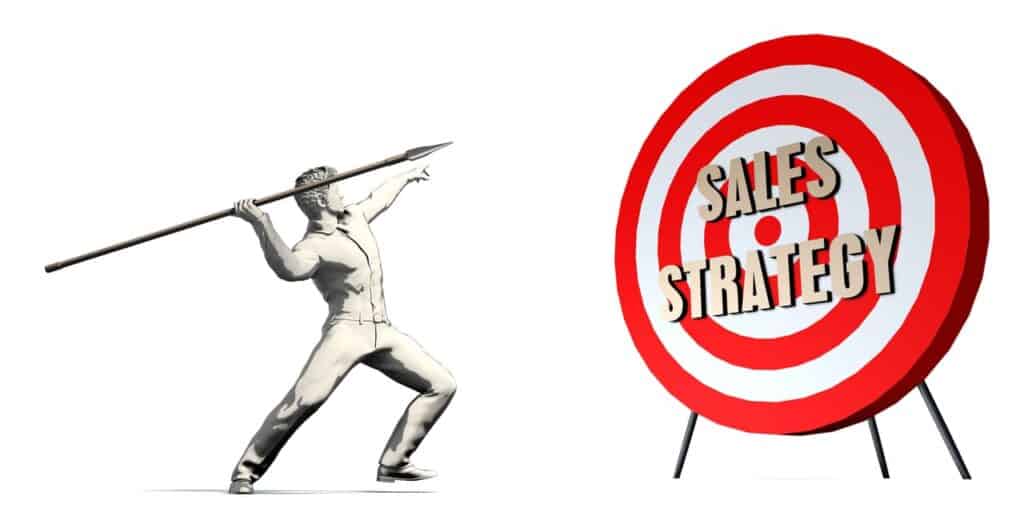
Final Thoughts | Elevating Your Field Sales Performance with Beest.app
In the fast-paced world of field sales, achieving targets requires more than just selling – it demands strategic thinking, optimization, and the right tools.
Beest.app, a game-changing solution that empowers field sales teams to surpass their goals and redefine success.
With its powerful features like real-time analytics, route optimization, lead management, and gamification, this field sales software revolutionizes your approach to field sales, turning challenges into exciting opportunities.
Unleash the power of Beest and experience a remarkable transformation in your field sales performance. Embrace the future of field sales where meeting targets becomes the norm, not the exception.
Book your free demo today and take the first step towards a more efficient, productive, and successful field sales journey. Let Beest.app be that difference for you.
Frequently Asked Questions
1. What is Beest.app?
Beest is a comprehensive sales enablement platform designed to streamline field sales processes, enhance productivity, and help sales teams meet and exceed their targets.
2. How can Beest.app help me meet my field sales targets?
Beest offers robust features like route optimization, lead management, real-time analytics, and gamification that empower you to strategize effectively, manage your leads efficiently, and stay motivated to meet your sales targets.
3. How does the route optimization feature in Beest.app work?
Beest’s route optimization feature analyzes your leads’ locations and creates the most efficient route for you to follow, ensuring you spend less time on the road and more time closing deals.
4. Can Beest integrate with my existing CRM system?
Yes, Beest can seamlessly integrate with your existing CRM system, allowing you to manage and track your leads effectively without disrupting your current workflow.
5. How does Beest.app‘s gamification feature motivates sales reps?
Beest’s gamification feature introduces game mechanics into the sales process, fostering a sense of healthy competition among sales reps and making meeting sales targets a fun and exciting challenge.
6. Is Beest suitable for both non-profit fundraising and regular sales?
Absolutely, Beest is versatile and can be effectively used for both non-profit fundraising and regular sales, thanks to its customizable features and user-friendly interface.
7. What kind of customer support does Beest.app provide?
Beest provides comprehensive customer support, including a dedicated support team available to assist you, extensive online resources, and a video teaching module to help you make the most of the platform.
